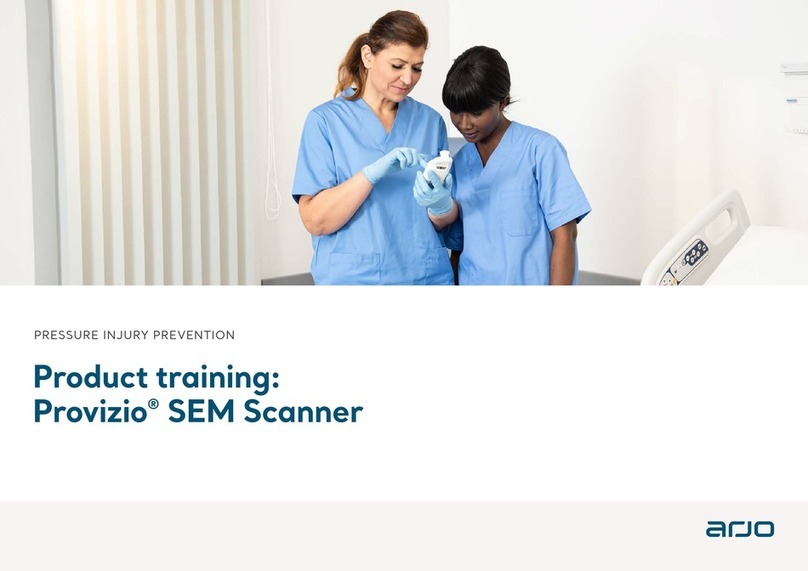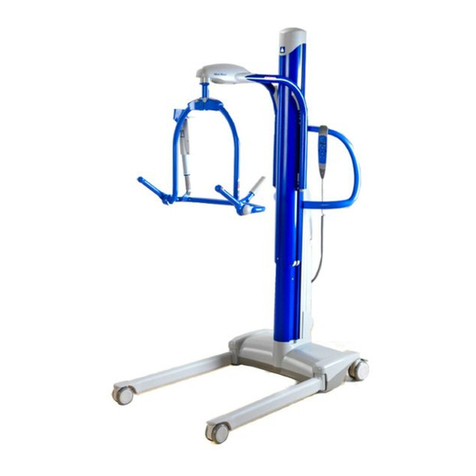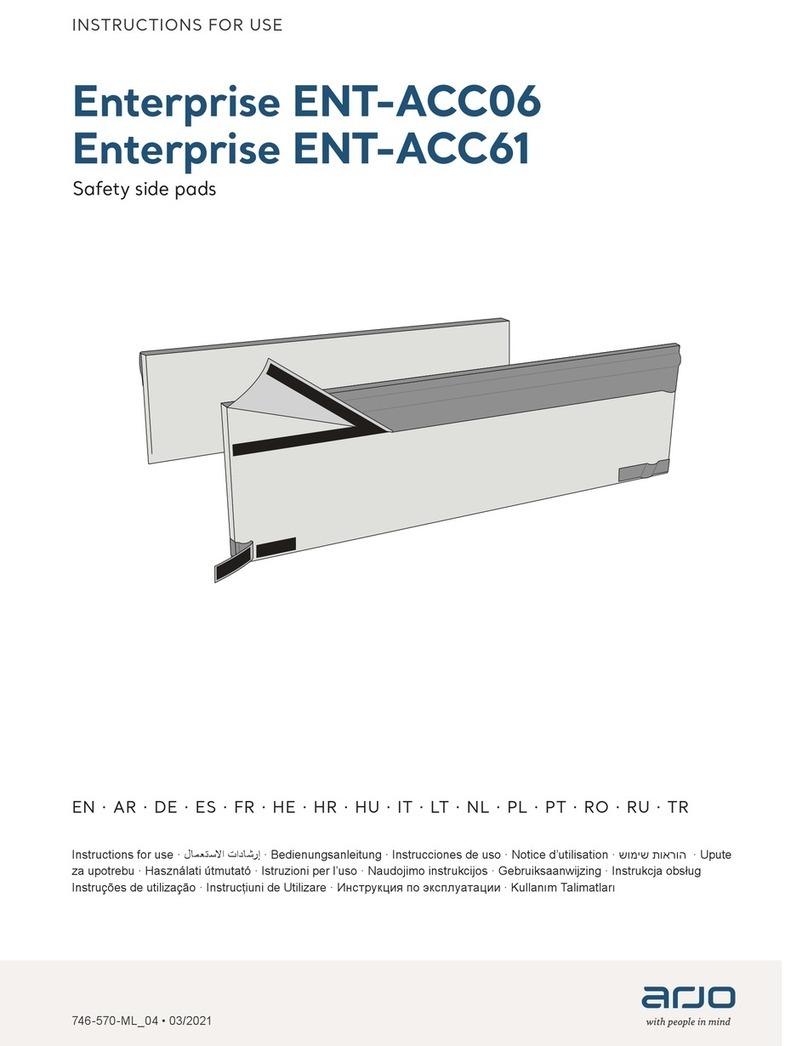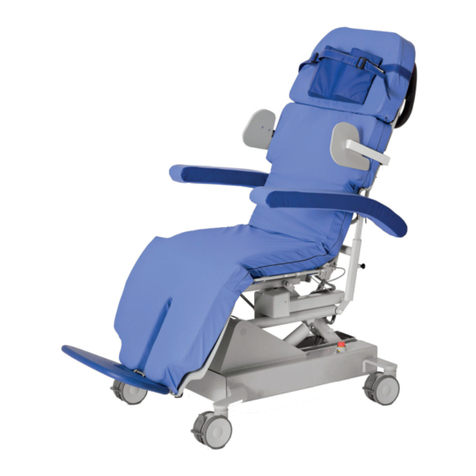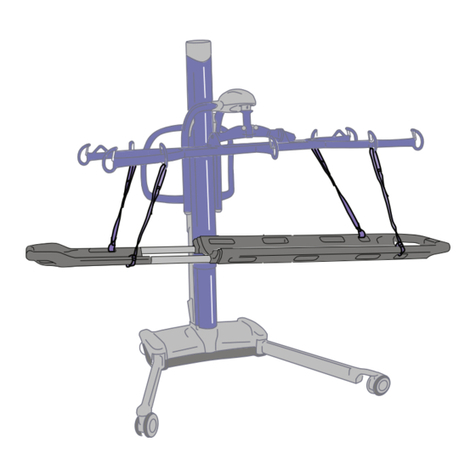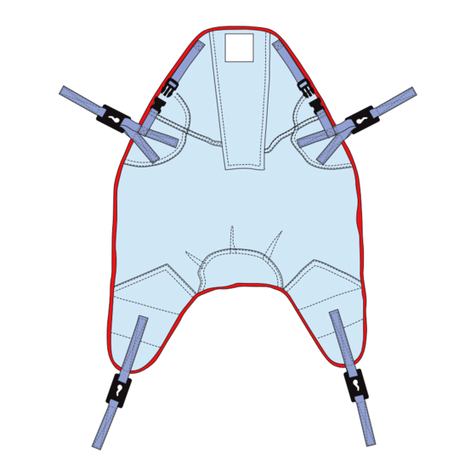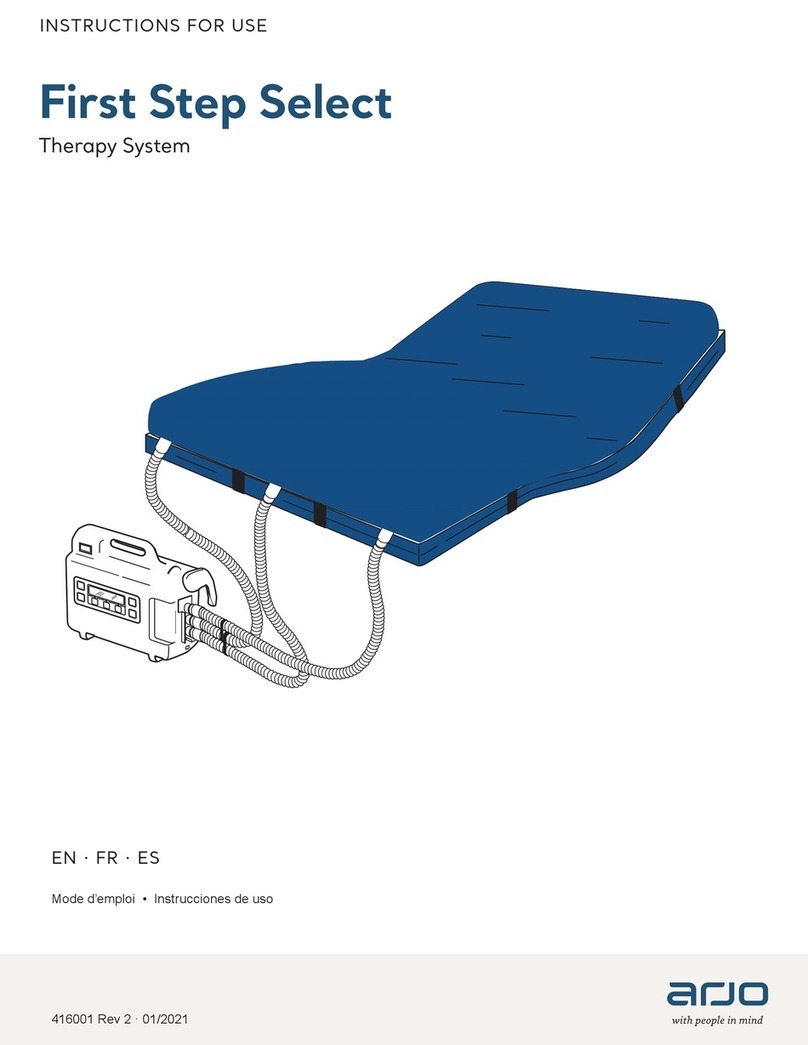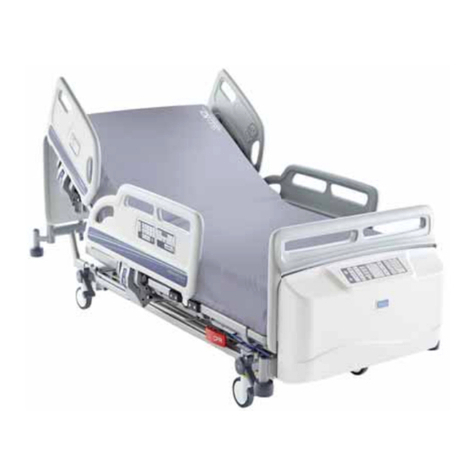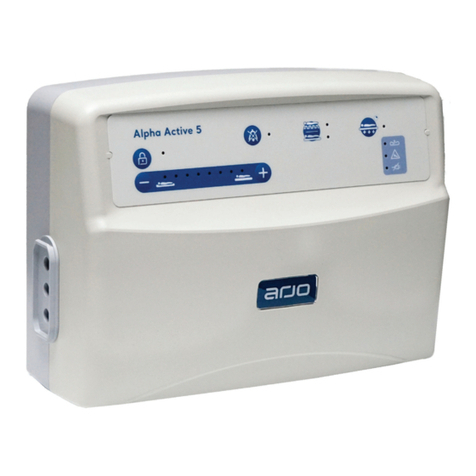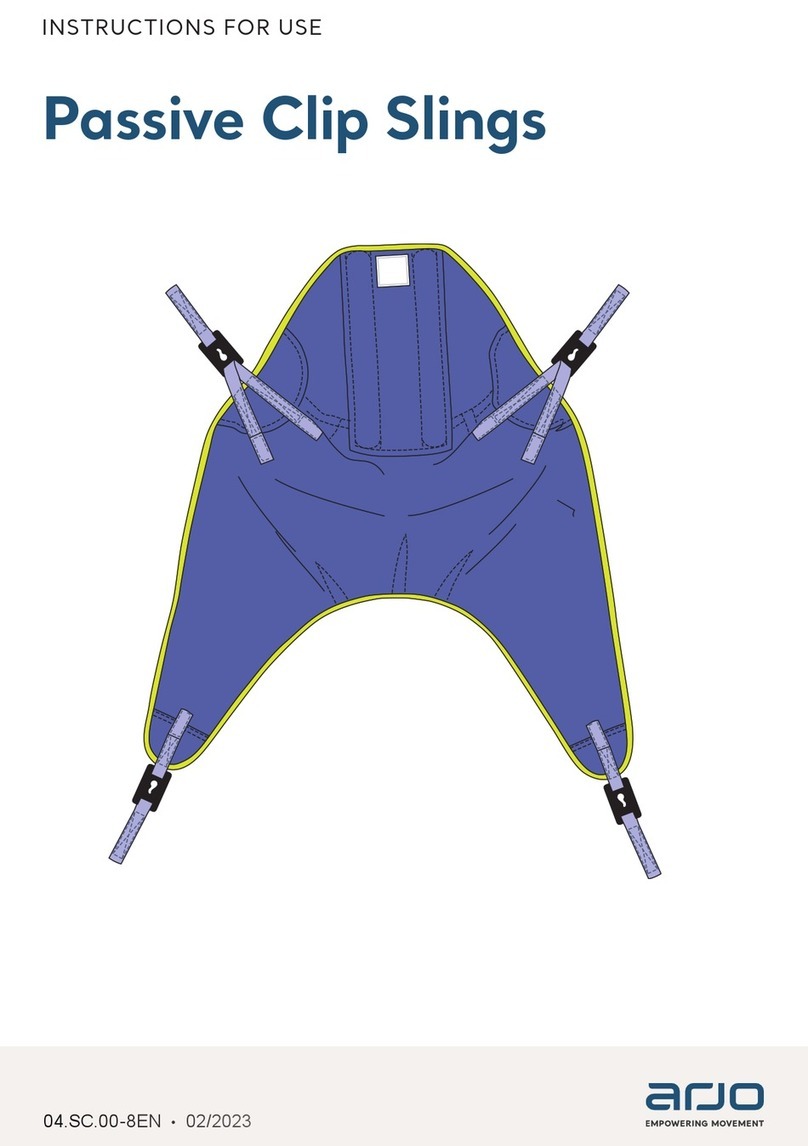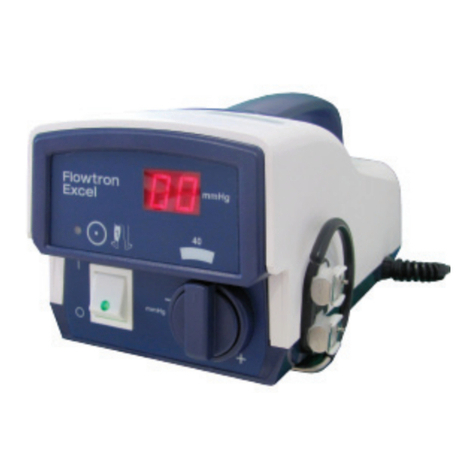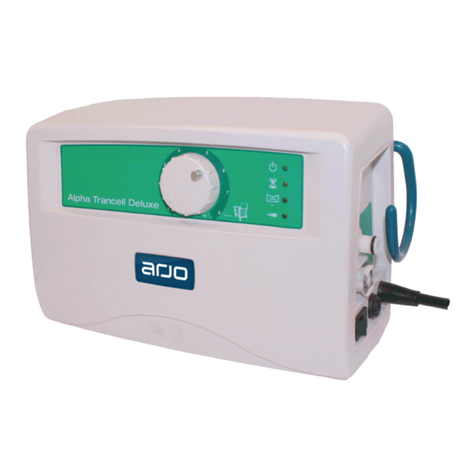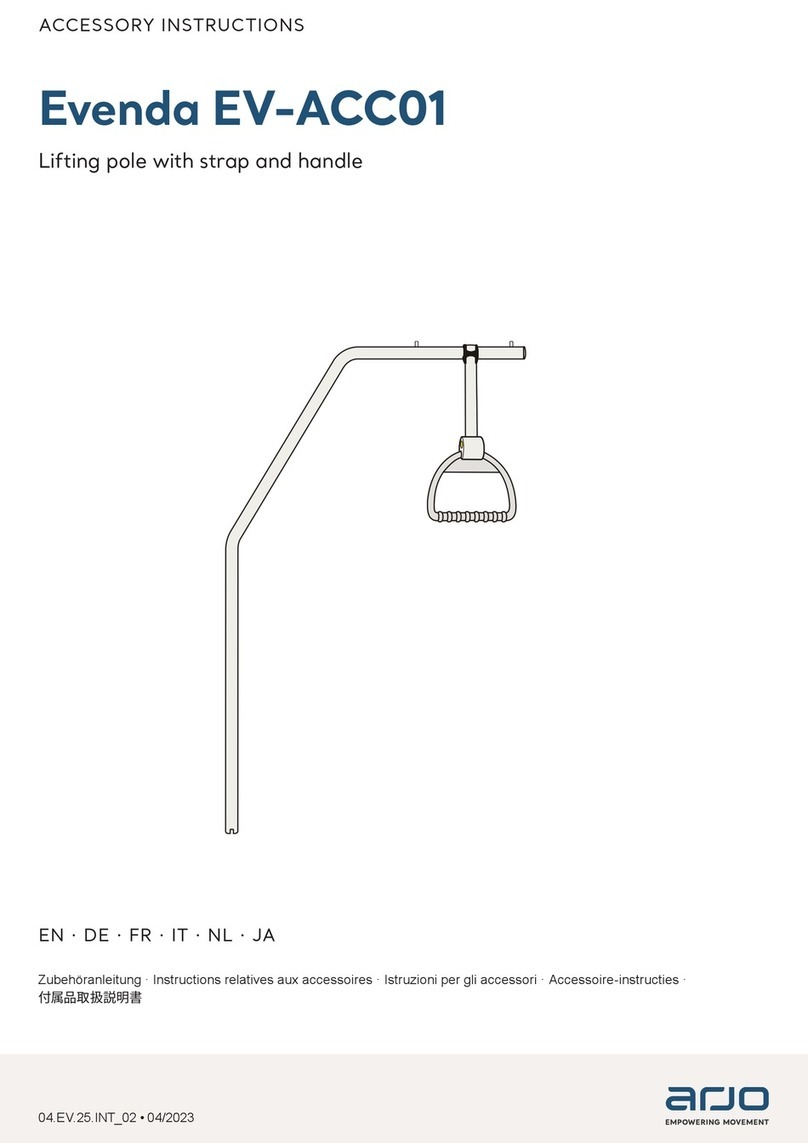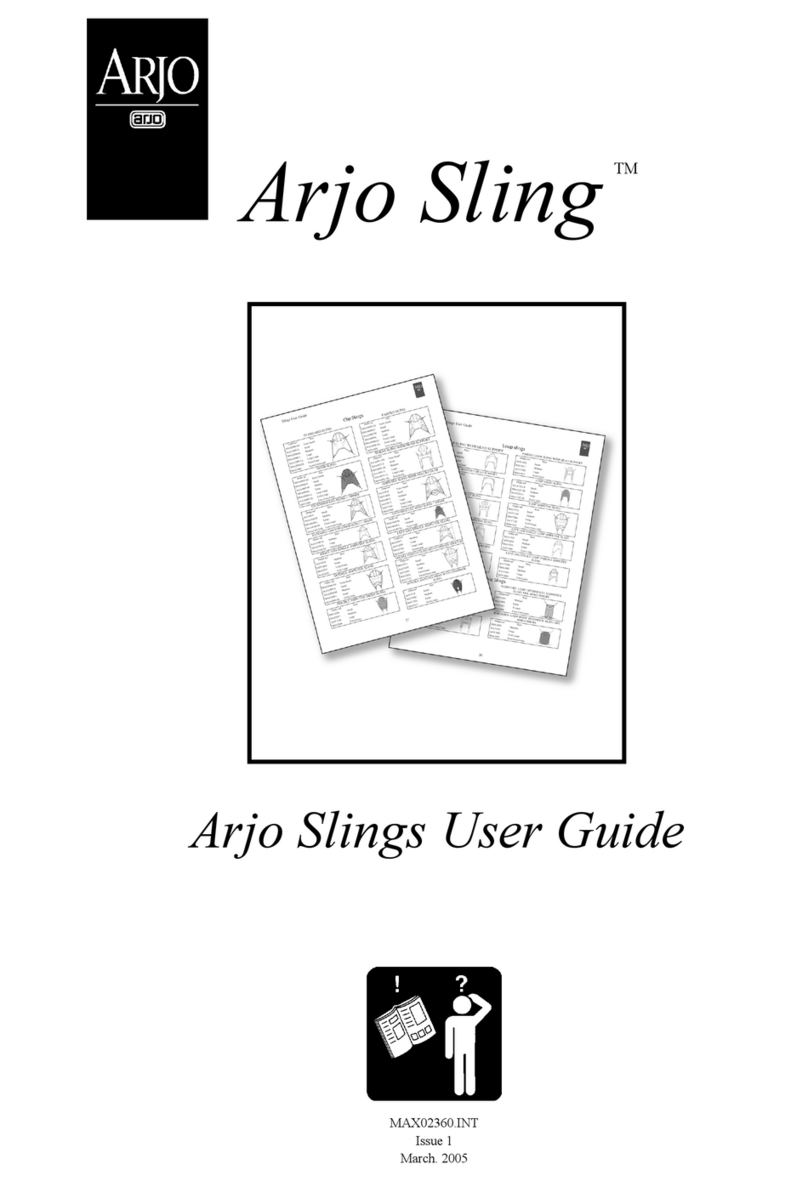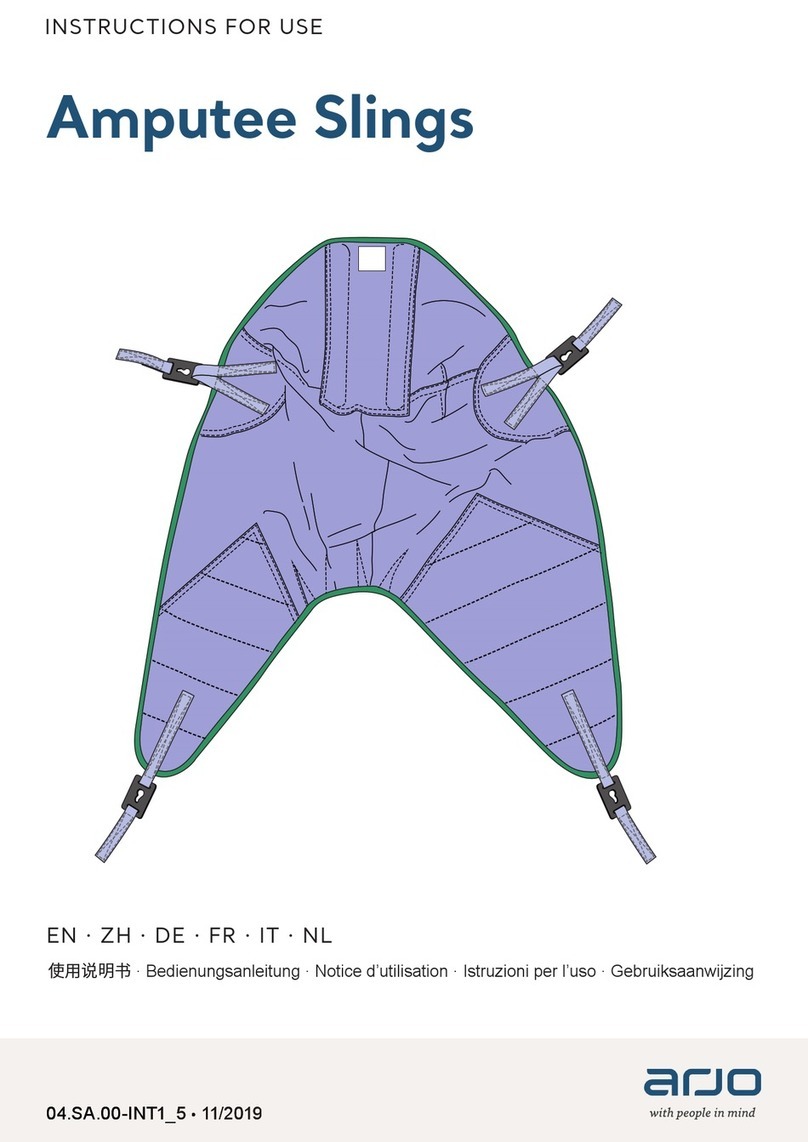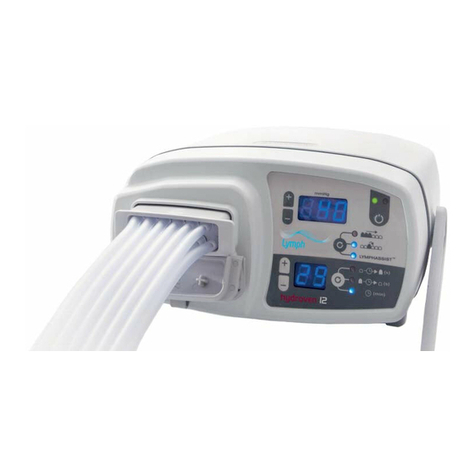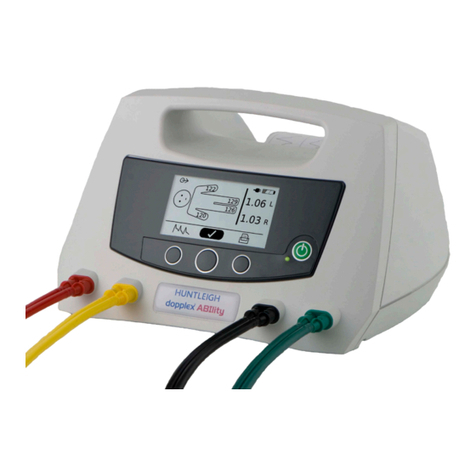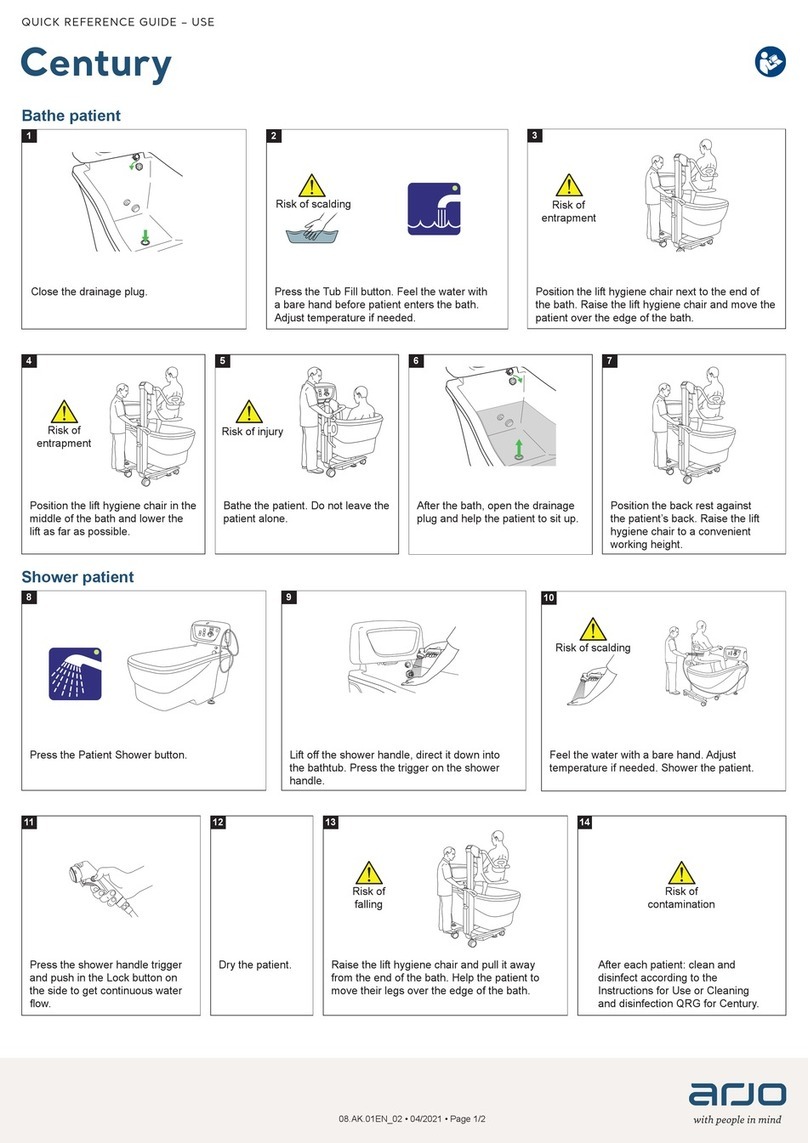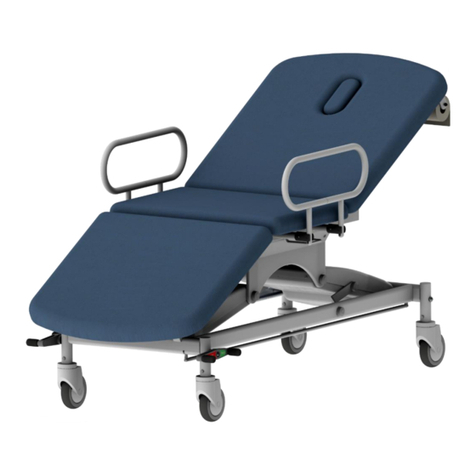
5
Intended use
SARA 3000 is a mobile raising aid, with a Safe
Working Load of 200 kg (440 lbs), intended to
be used for raising to a standing position and
short transfer of residents (e.g. raising from
bed and transit to wheelchair, or from
wheelchair to toilet) in hospitals, nursing
homes or other health care facilities where the
resident has been clinically assessed to
correspond to the following categories;
Category C
- Sits in a wheelchair
- Is able to partially bear weight on at least one
leg.
- Has some trunk stability
- Dependent on carer in most situations
- Physically demanding for carer.
- Stimulation of remaining abilities is important.
SARA 3000 shall always be handled by a
trained caregiver, continuously attending to
the resident, and in accordance with the
instructions outlined in these Operating and
Product Care Instructions.
SARA 3000 is intended to be used with clip
slings only -except for the ‘Transfer Slings’
which also have loops for attachment of the leg
flaps to the central lug situated on the resident
support arms.
Use slings that are designed for SARA 3000.
Warning: Before attempting to use
SARA 3000, a full clinical assessment of
the resident his/her condition, and
suitability must be carried out by a
qualified person.
Caution: Although it is manufactured to
a high standard, the Sara 3000 and its
accessories shall not be left for
extended periods in humid or wet areas.
Do not under any circumstances spray
the Sara 3000 or accessories (excluding
slings or ARJO approved wet
environment equipment) with water,
such as under the shower.
General Safety Instructions
Any references made to the ‘resident’ or
‘patient’ in this document, means the person
being raised.
Warning: READ BEFORE USE.
Before using your SARA 3000 you must
read and fully understand these
Operating and Product Care
Instructions. You must be trained on
SARA 3000, and any accessories, as
well as its functions and controls.
The Operating and Product Care Instructions
are mandatory for the safe and effective
handling of Sara 3000, including the safety of
the resident and the caregiver.
Warning: Only Medibo Medical
Products N.V. designated parts,
designed for the purpose shall be used
for SARA 3000 to avoid injuries
attributable to the use of inadequate
parts.
Unauthorized modifications or repairs
on SARA 3000 may affect its safety and
will invalidate any warranty. Medibo
Medical Products N.V. will not accept
responsibility for any accidents,
incidents or lack of performance that
occur as a result of any such
unauthorized modification or repair.
Safety Instructions
